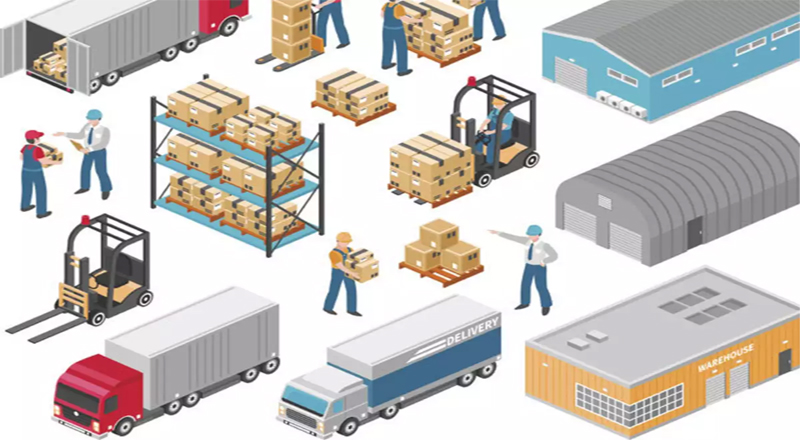Global supply chains and logistics sectors have undergone a major disruption during the past few months during pandemic. Several first-time users logged on to e-commerce websites to make safe, virtual purchases for essentials and have a contactless delivery experience at their doorstep. The sector also witnessed a major shift in popular categories, from luxury and lifestyle purchases to shopping for basic essentials like groceries, medicines, Office and school supplies, e-learning tools and even food delivery. As per the reports, e-commerce has witnessed an order-volume growth of 17% as of June 2020, and about 65% growth in single brand e-commerce platforms.
However, in-spite of challenges like manufacturing slowdown, shortage of labour, transportation bottlenecks, and disruption in national and international movement of cargo, the massive rise of e-commerce has brought about faster digital adoption and enhanced the potential for overall growth of the sectors. With a focus on meeting consumer expectations for speedy delivery, customization, product availability and easy returns while handling complex globalisation of supply chains, warehousing trends have witnessed major shifts. Some key technology adoptions that are helping make this shift, including the Cloud based Supply Chain Softwares , AI and Automation and IoT and Business Integration has been a key word in digital adoption, especially for the logistics and supply chain sector.
Secondly, the Indian logistics and supply chain sector is set to grow at a tremendous rate, aided by accelerated digital adoption, supportive government policies, better transportation infrastructure, increased PE funding in warehousing real estate and shift in service sourcing strategies.
While all good things are happening for the businesses to survive and at the same time, it could also save many lives. Every new technology adoption brings a newer opportunity for the hackers. Out of that, one technology we can discuss, that is contact tracing apps. Hackers found contact tracing apps an ideal cover for phishing schemes, by misrepresenting official tracing accounts via email. Legitimate apps themselves are also targets for hackers who see it as a treasure trove of data with individual names and addresses as well as insights from contacts and movements. Secondly, for people in high-value positions such as politicians, businessmen and lawyers in important cases, information about that person’s movements and meetings is valuable to opponents and easily sold by bad actors. Many of these apps lacked encrypted source code, and many did not have intrusion detection when hackers accessed restricted mobile data.
Another, critical thing has come to the limelight is, hackers quickly used the pandemic and related anxiety to lure people into phishing schemes and malware attacks. There is also pressure on healthcare companies and researchers to safeguard their vaccine and treatment data. As of mid-July, there have been multiple reports of Russian and Chinese state-sponsored hackers attempting to steal coronavirus vaccine data from various labs. Most importantly, millions of workers have turned their homes into their new, remote office, including state government employees, which has brought a host of risks through the use of unsecured Wi-Fi and poor access controls. The massive shift toward remote work means more networks are accessed by employees on their own devices. During this hour, training for employees and the right technology, as well as increased cooperation between the security teams and IT/network operations groups, are the most critical factors to save themself from the bad actors. We can say this as the dark side of technology adoption.
So, Stay Safe…
Global supply chains and logistics sectors have undergone a major disruption during the past few months during pandemic. Several first-time users logged on to e-commerce websites to make safe, virtual purchases for essentials and have a contactless delivery experience at their doorstep. The sector also witnessed a major shift in popular categories, from luxury and lifestyle purchases to shopping for basic essentials like groceries, medicines, Office and school supplies, e-learning tools and even food delivery. As per the reports, e-commerce has witnessed an order-volume growth of 17% as of June 2020, and about 65% growth in single brand e-commerce platforms.
However, in-spite of challenges like manufacturing slowdown, shortage of labour, transportation bottlenecks, and disruption in national and international movement of cargo, the massive rise of e-commerce has brought about faster digital adoption and enhanced the potential for overall growth of the sectors. With a focus on meeting consumer expectations for speedy delivery, customization, product availability and easy returns while handling complex globalisation of supply chains, warehousing trends have witnessed major shifts. Some key technology adoptions that are helping make this shift, including the Cloud based Supply Chain Softwares , AI and Automation and IoT and Business Integration has been a key word in digital adoption, especially for the logistics and supply chain sector.
Secondly, the Indian logistics and supply chain sector is set to grow at a tremendous rate, aided by accelerated digital adoption, supportive government policies, better transportation infrastructure, increased PE funding in warehousing real estate and shift in service sourcing strategies.
While all good things are happening for the businesses to survive and at the same time, it could also save many lives. Every new technology adoption brings a newer opportunity for the hackers. Out of that, one technology we can discuss, that is contact tracing apps. Hackers found contact tracing apps an ideal cover for phishing schemes, by misrepresenting official tracing accounts via email. Legitimate apps themselves are also targets for hackers who see it as a treasure trove of data with individual names and addresses as well as insights from contacts and movements. Secondly, for people in high-value positions such as politicians, businessmen and lawyers in important cases, information about that person’s movements and meetings is valuable to opponents and easily sold by bad actors. Many of these apps lacked encrypted source code, and many did not have intrusion detection when hackers accessed restricted mobile data.
Another, critical thing has come to the limelight is, hackers quickly used the pandemic and related anxiety to lure people into phishing schemes and malware attacks. There is also pressure on healthcare companies and researchers to safeguard their vaccine and treatment data. As of mid-July, there have been multiple reports of Russian and Chinese state-sponsored hackers attempting to steal coronavirus vaccine data from various labs. Most importantly, millions of workers have turned their homes into their new, remote office, including state government employees, which has brought a host of risks through the use of unsecured Wi-Fi and poor access controls. The massive shift toward remote work means more networks are accessed by employees on their own devices. During this hour, training for employees and the right technology, as well as increased cooperation between the security teams and IT/network operations groups, are the most critical factors to save themself from the bad actors. We can say this as the dark side of technology adoption.
So, Stay Safe…





